I Have Foxgloves Growing In My Forest Garden – How I Sow Them In A Controlled Way

BIENNIALS > FOXGLOVES > SOWING

Elizabeth is a Permaculture Garden Designer, Sustainability Consultant and Professional Writer, working as an advocate for positive change. She graduated from the University of St. Andrews with an MA in English and Philosophy and obtained a Diploma in Applied Permaculture Design from the Permaculture Association.
Reviewed By DAN ORI

Dan has over 27 years’ under his belt caring for plants and gardens. Working as a Horticultural Instructor and Consultant, he draws on a diverse range of experience that includes working as a Head Gardener, Tree Surgeon, Garden Centre Trouble Shooter, and writer of academic papers. Dan has a Level 3 Diploma in Horticulture and is currently a candidate for the RHS’s most prestigious award – The Master of Horticulture.
Contributions From EMILY CUPIT

Emily is a Gardening Writer, Photographer and Videographer from Derbyshire, UK. She is the Founder of Emily's Green Diary - a community of more than 75,000 people who share in her gardening journey.
IN THIS GUIDE
FOXGLOVE GUIDES
Container Growing
Pruning
Sowing
Foxgloves are a cottage garden staple and are extremely useful for a wildlife-friendly garden.
Often, if happy in their growing location, they can self-seed readily and you can have new flowers springing up each year.
I have foxgloves growing through my forest garden, below my apple and plum trees, where they pop up each year amid the rest of the layered planting, looking beautiful with comfrey, rosebay willowherb and a range of other beneficial fruit tree guild plants.
Seeds can also be collected or purchased and sown in a more controlled way to obtain more of these useful plants.
To sow foxgloves from seed:
- Buy or collect your foxglove seeds.
- Prepare seeds trays filled with a moist seed-starting compost.
- Press the seeds down onto the growing medium, but do not cover them.
- Keep in a sheltered spot over winter.
- Plant out in spring.
| Difficulty | Easy |
| Equipment Required | Seeds, seed tray, growing medium, gardening gloves |
| When To Sow | March to April |
| When To Plant Out | June to August |
1) Source Your Seeds
There are a range of different foxgloves that you might grow.
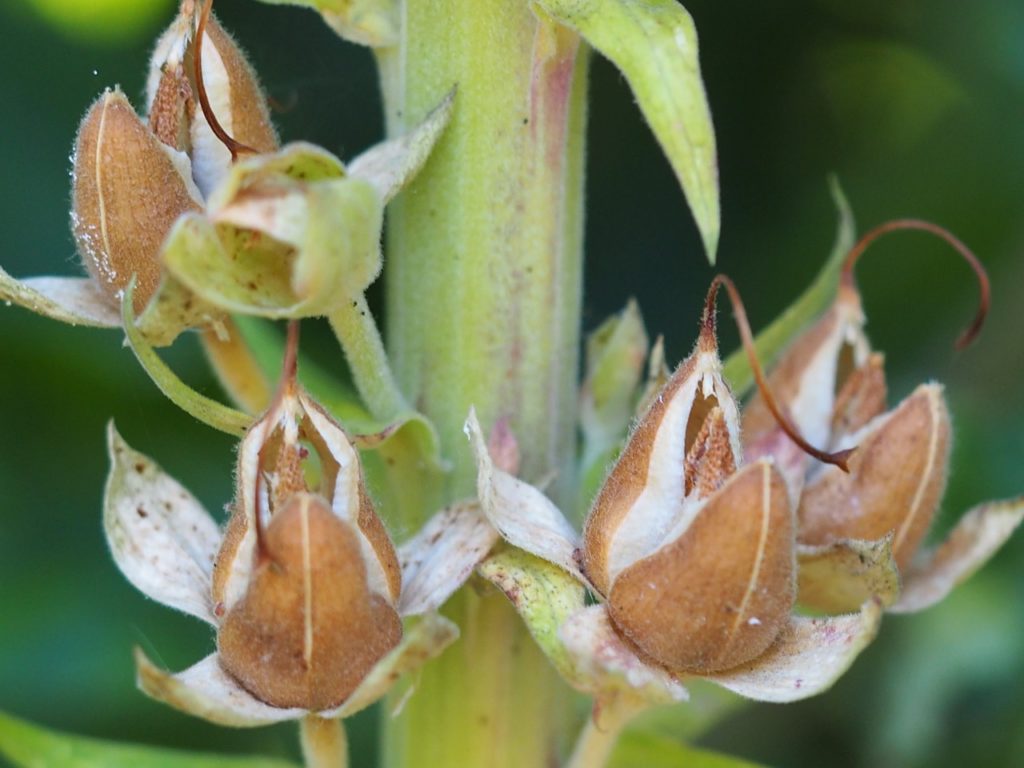
Among the best options are two native foxgloves, Digitalis purpurea and D. purpurea f. albiflora, but there are many other biennial and perennial options that you might consider, with blooms in different hues.
Perennial types tend to be less hardy and require some winter protection, whilst most biennial foxgloves can withstand winters in the British Isles.
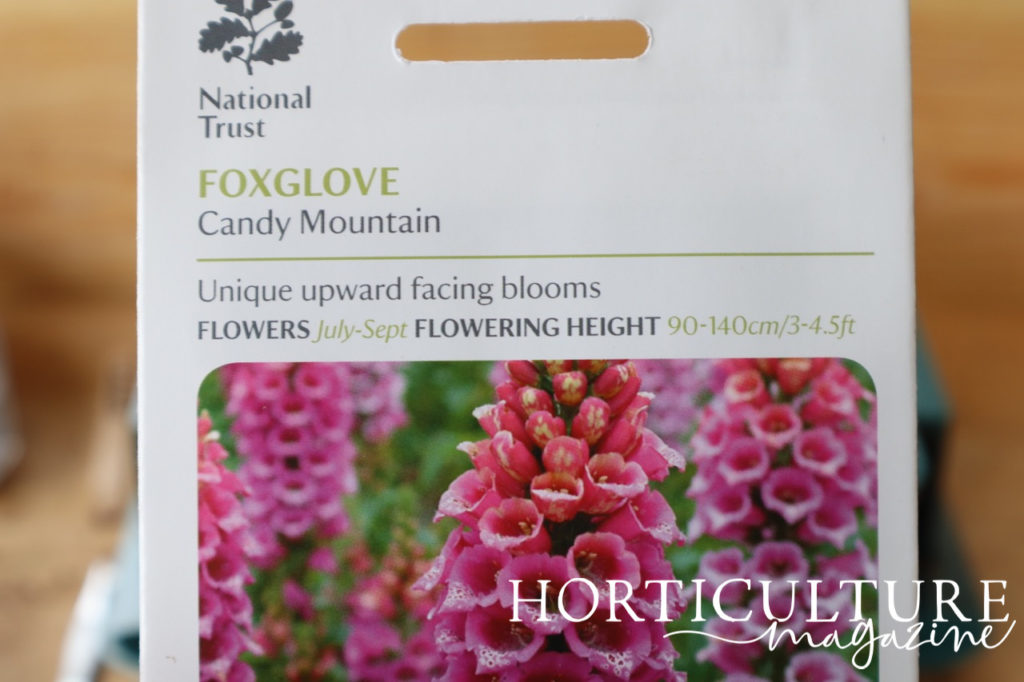
You can purchase seeds or, of course, collect seeds from your existing foxgloves to sow.
I chose to grow the ‘Candy Mountain’ variety with seeds from the National Trust.
2) Prepare Seed Trays
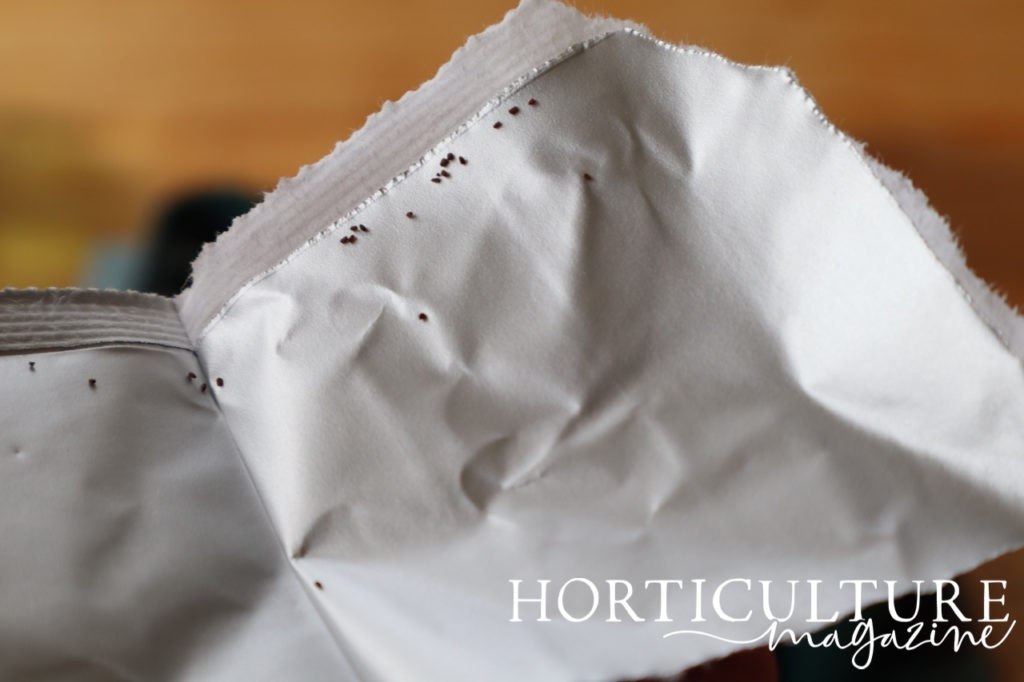
Prepare seed trays or other containers filled with a suitable, moist, peat-free, seed-starting compost.
This should be moist, but light and friable, and relatively free-draining to prevent fungal issues.
You can see from the image above that these seeds are absolutely tiny!
I had to work very carefully to separate and sow each miniature seed into separate modules of my growing tray.
3) Press Seeds Down
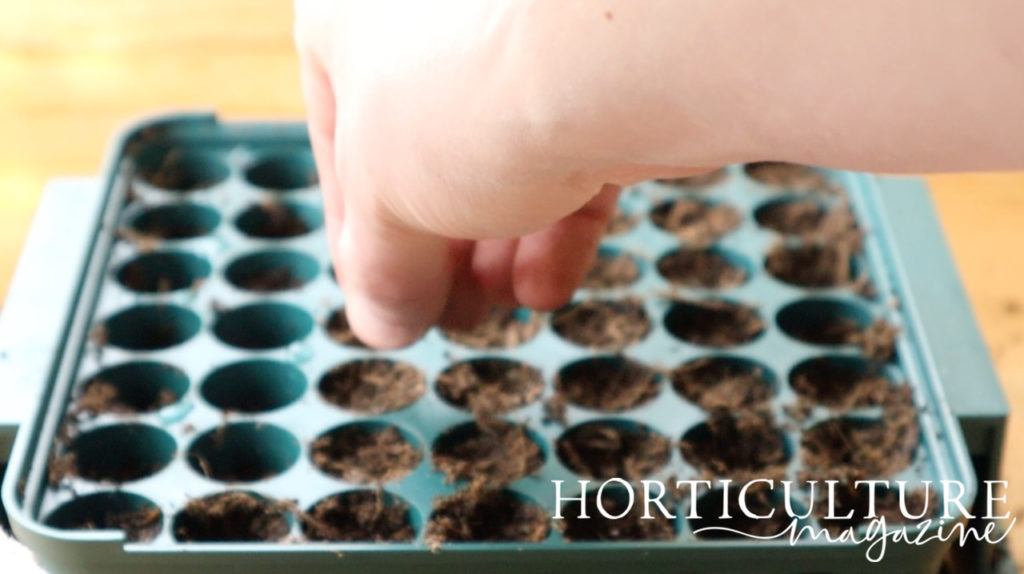
Press the foxglove seeds onto the surface of the growing medium, but make sure that you do not cover them as foxglove seeds require light for germination.
4) Overwinter In A Sheltered Area
Keep the seeds in a sheltered spot outdoors or in a cold frame or unheated greenhouse at 10-15°C for germination to take place.
The seedlings should germinate in around 2 weeks or so.
Pot up seedlings as required into pots of peat-free, loam-based compost and keep them in a sheltered position over the winter months.
“If you are worried about the seeds being disturbed, you can put a dusting of fine-grade vermiculate over the seed as this will still let sufficient light through,” says Master Horticulturist Dan Ori.
5) Plant Out In Spring
Foxgloves purchased at a later stage of growth can be planted out in your garden in the early autumn.
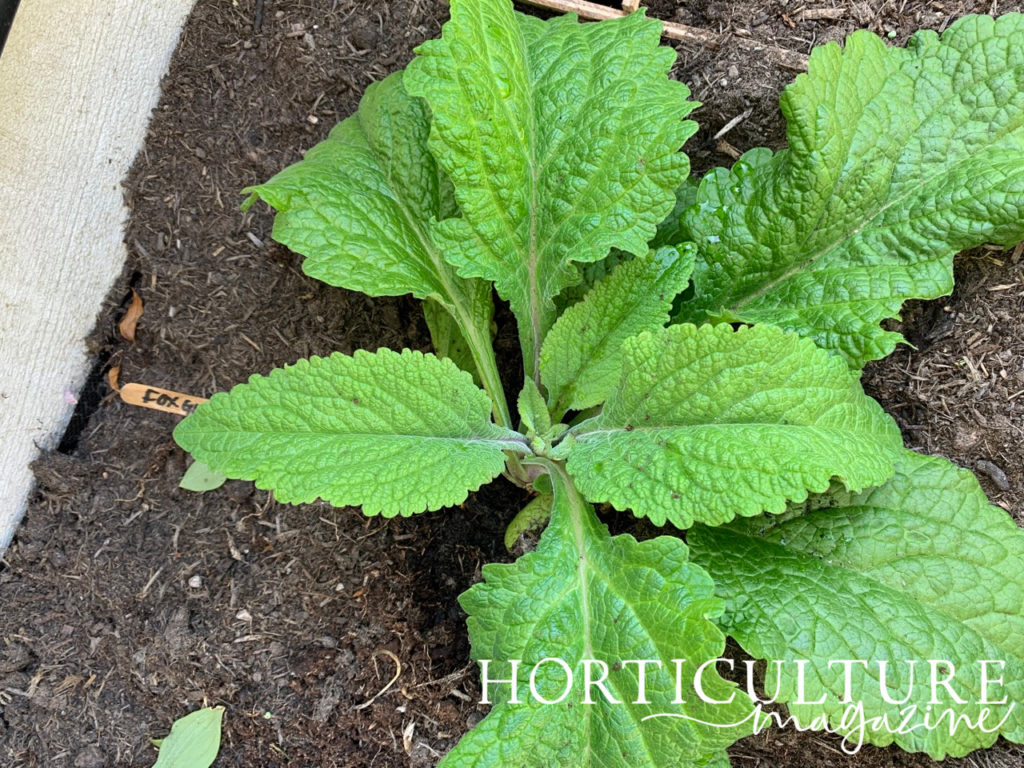
However, young plants are best overwintered in a more sheltered spot until they are established and are therefore best planted out into their final growing positions in the spring, usually in March or April.
That being said, I have successfully grown foxgloves from seed when planting out in the same year – but they were kept in a very sheltered corner of my garden.
When planting out your foxgloves, make sure that they are spaced at least 30-35cm apart.
They should be positioned in a location with moist yet free-draining soil with plenty of organic matter, in light or dappled shade.
Biennials and most perennial types of foxglove will flower in their second year.
This process is relatively easy and germination rates are generally high.
